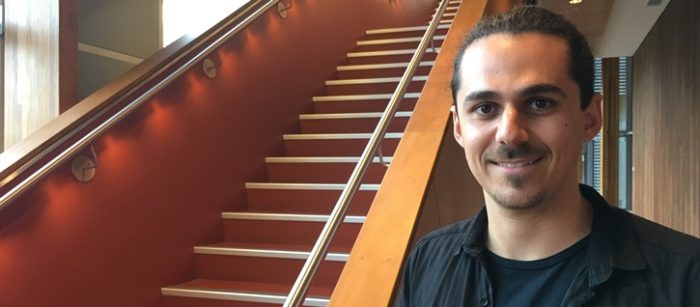News
3D printing bone tissue
Jun 28 2022
Jeremy Dinoro (pictured) already had a Bachelor of Science majoring in Medical Biotechnology under his belt when he heard about the masters in biofabrication.

“When I first heard that the University of Wollongong was offering a Masters course in 3D printing I was intrigued,” Jeremy said. “I thought it was going to require an engineering degree of sorts… until I realised it was based on the use of 3D printing for regenerative medicine applications.”
“It was the perfect opportunity to pursue a medical research degree—what I’ve wanted to do since high school—from a fresh perspective.”
3D printing seaweed to support skin cells
Jeremy’s project involves the use of sugar extracted from green seaweed, called ulvan, which has benefits ranging from dietary to wound dressing applications.
“My work involves making an ulvan based bio-ink for the 3D printing of scaffolds that will support the growth of adult skin cells,” he said.
“This is the first time this material has been explored in this field and I’m trying to assess its potential use in future wound healing applications with assistance from a Melbourne-based dermatologist.”
In ten months, through coursework and the support of the multidisciplinary ACES team, Jeremy has been brought up to speed on a range of technical skills that underpin his research project.
This includes how to chemically modify the seaweed to make a stable gel as well as characterising the gel’s chemical and physical properties using advanced techniques.
“I’ve also learned the basic computer coding for different printers, as well as the various printing techniques and the pros and cons of each,” he said.
“Already, I have achieved the successful chemical modification of the seaweed, produced a printable bio-ink and generated 3D printed scaffolds that can be used to promote the regeneration of superficial wounds, tailored, through 3D modelling, to an individual.”
3D printing liver constructs on exchange in Europe
In August, Jeremy will head to the Netherlands where he will be a student of the University of Utrecht as part of the exchange component of the degree.
Utrecht University is a leading institution in biofabrication and offers a unique combination of studying 3D printing technology with a biomedical approach.
“I’ll be there for around 10 months and I will apply the skills I’ve picked up here to a new project involving fabricating liver constructs with hepatic cell lines through the use of bioreactors,” he said.
“The overseas component will give me access to new facilities—equipment and materials alike—and new minds in hope of broadening my knowledge. Not only will it benefit me academically, through networking, but it will let me experience a new culture and meet new people,” he said.













